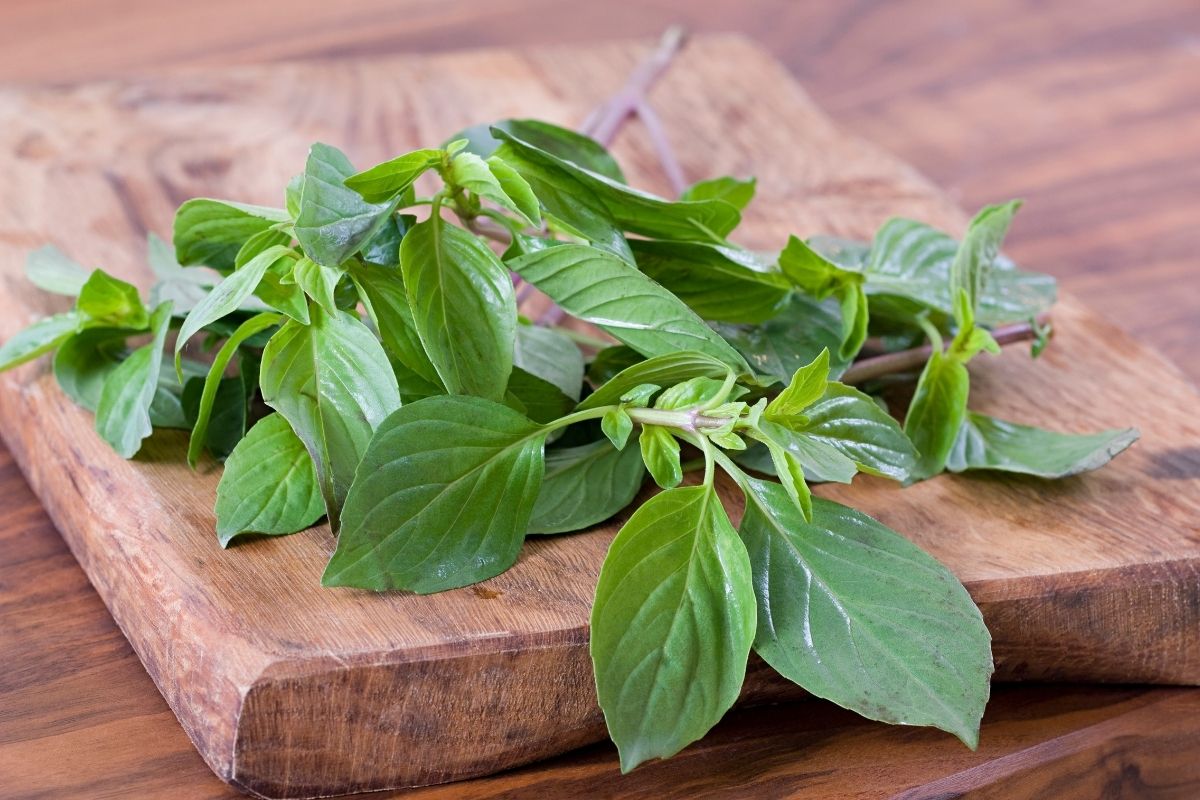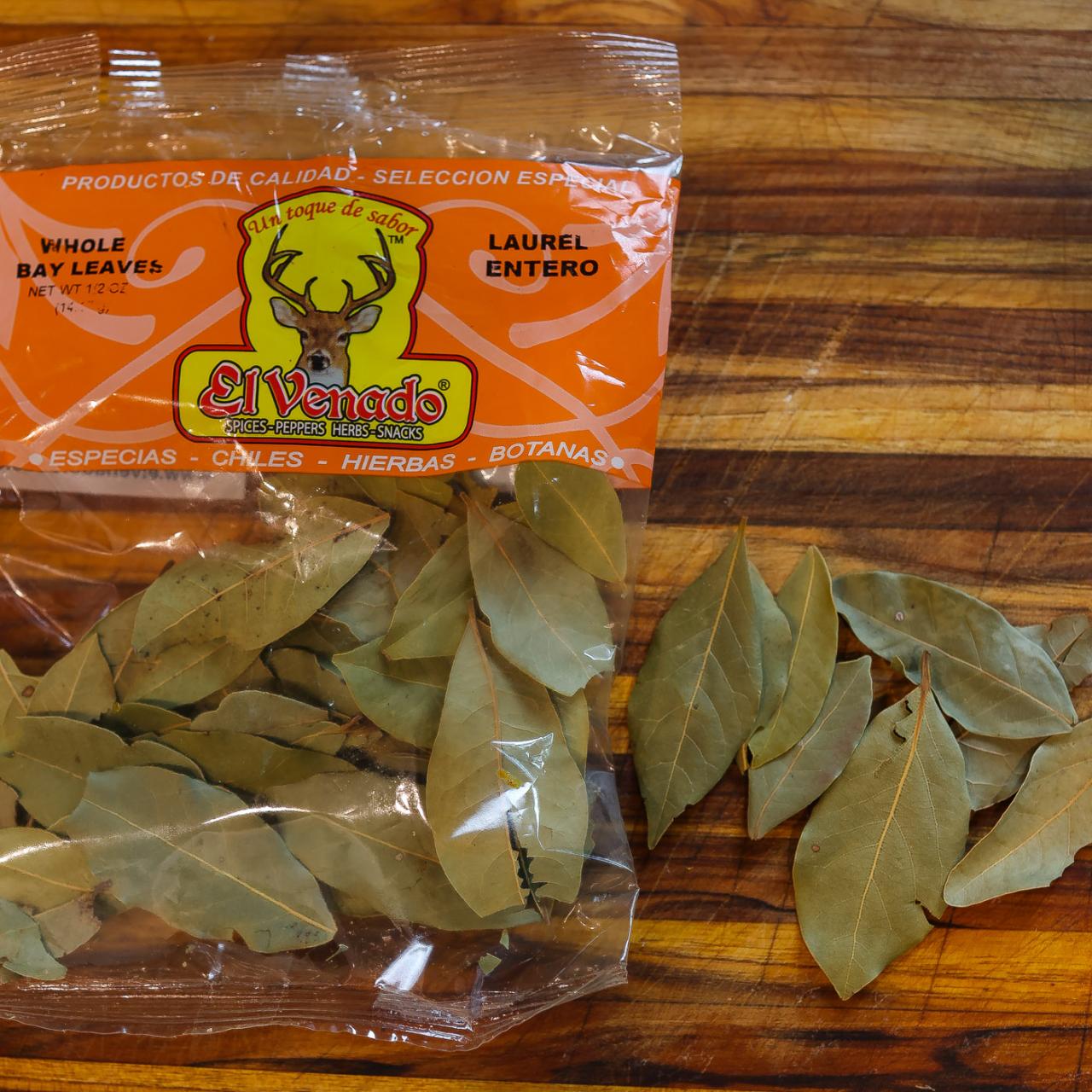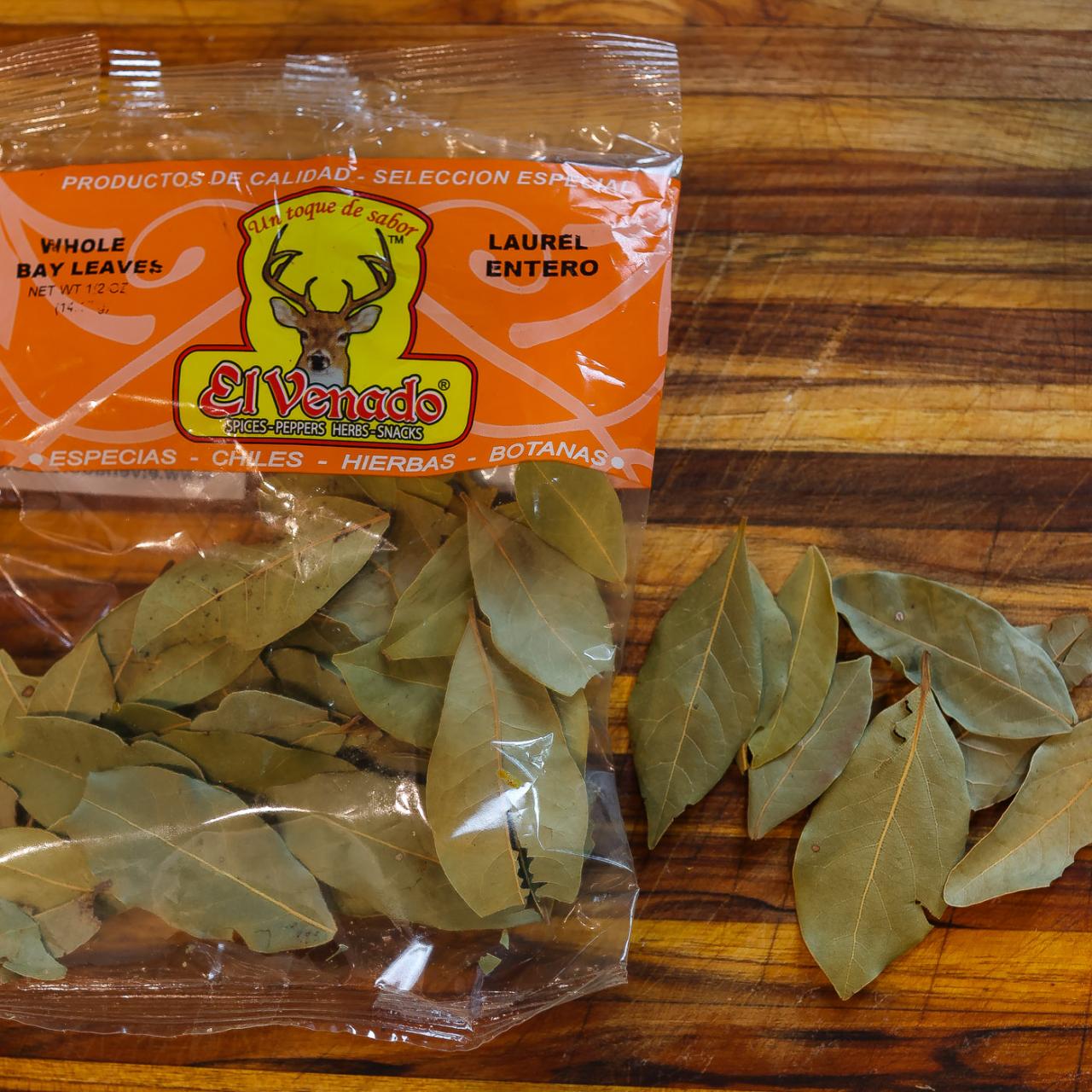The Ultimate Bay Leaf Substitute Guide for Better Flavor in Your Dishes is your comprehensive resource for finding the perfect replacement when this aromatic herb is unavailable or you simply want to explore new flavor profiles. Bay leaves, with their distinctive earthy and slightly bitter notes, have long been a staple in kitchens worldwide, adding depth and complexity to countless dishes.
But what happens when you find yourself without this culinary essential? This guide dives deep into the world of bay leaf substitutes, offering a variety of options to enhance your cooking and expand your culinary horizons.
From the subtle warmth of thyme to the citrusy zest of lemon peel, there’s a substitute for every taste and culinary need. We’ll explore the unique flavor profiles of each option, discuss their best uses, and provide valuable tips for achieving optimal flavor balance.
Whether you’re a seasoned chef or a home cook, this guide will empower you to confidently substitute bay leaf and create delicious dishes that tantalize your taste buds.
The Power of Bay Leaf

The humble bay leaf, a staple in many kitchens worldwide, is much more than just a garnish. Its unique flavor profile and versatility make it an essential ingredient for elevating dishes from simple to extraordinary. The aromatic, slightly bitter, and slightly sweet notes of bay leaf can transform a dish’s complexity and depth.This versatile spice, often referred to as the “King of Herbs,” has a rich history spanning centuries and continents.
Its use dates back to ancient times, with records of bay leaf utilization in ancient Greece and Rome. In traditional Mediterranean cuisine, bay leaf is an indispensable ingredient, adding its signature flavor to stews, soups, and sauces. The influence of bay leaf extends beyond Mediterranean cuisine, with its presence in various culinary traditions, including French, Indian, and Asian cuisines.
The Flavor Profile of Bay Leaf, The Ultimate Bay Leaf Substitute Guide for Better Flavor in Your Dishes
Bay leaf’s distinctive flavor profile stems from its volatile oils, primarily eugenol, cineole, and linalool. These compounds contribute to its earthy, slightly bitter, and slightly sweet notes, with hints of camphor and a subtle hint of menthol.
- Earthy:This quality provides a grounding and robust base flavor to dishes.
- Slightly Bitter:This adds a touch of complexity and balance, preventing dishes from becoming overly sweet or bland.
- Slightly Sweet:This subtle sweetness complements savory flavors, creating a harmonious blend.
- Camphor:This adds a warming and slightly medicinal note, contributing to the overall complexity of the flavor profile.
- Menthol:This subtle hint of menthol adds a refreshing and slightly cooling element to the flavor.
These diverse flavor notes make bay leaf an incredibly versatile ingredient, suitable for a wide range of culinary applications. Its ability to enhance both savory and sweet dishes underscores its importance in the world of cooking.
Why Substitute Bay Leaf?
While bay leaf is a staple in many kitchens, there are situations where using a substitute might be necessary or desirable. Understanding these scenarios can help you make informed decisions about your cooking.
Bay Leaf Unavailability
Bay leaves may not always be readily available. This can occur due to various reasons:
- Seasonal variations:Bay leaves are harvested during specific seasons, making them less accessible outside those periods.
- Geographic location:Certain regions might have limited access to fresh or dried bay leaves due to climate or logistical constraints.
- Supply chain disruptions:Unexpected events like natural disasters or global pandemics can disrupt the supply chain, leading to temporary shortages.
- Forgotten pantry staples:Sometimes, bay leaves can be overlooked in the pantry, leading to their absence when needed.
Bay Leaf Allergies and Sensitivities
While uncommon, some individuals may experience allergic reactions or sensitivities to bay leaf. These reactions can range from mild skin irritations to more severe symptoms like respiratory problems or digestive issues. In such cases, substituting bay leaf becomes crucial to avoid potential health risks.
Alternative Flavors
Using a substitute can also be a deliberate choice to introduce different flavor profiles to your dishes. For instance, you might want to:
- Enhance specific flavor notes:Instead of relying solely on the earthy aroma of bay leaf, you might prefer a more citrusy, floral, or spicy note in your dish.
- Experiment with new culinary experiences:Substituting bay leaf allows you to explore different flavor combinations and expand your culinary repertoire.
- Accommodate dietary restrictions:Some individuals may follow specific diets that exclude bay leaf due to its potential interactions with certain medications or health conditions.
Best Bay Leaf Substitutes

While bay leaves are a staple in many cuisines, there are times when you might need to find a suitable alternative. Whether you’re out of bay leaves, looking for a different flavor profile, or catering to dietary restrictions, this guide will help you discover the best bay leaf substitutes and how to use them effectively.
Bay Leaf Substitutes: A Comprehensive Guide
Finding the right bay leaf substitute can be a game-changer in your culinary endeavors. Here’s a comprehensive guide to help you choose the perfect substitute based on your needs and desired flavor profile:
Substitute |
Flavor Profile |
Best Uses |
Considerations |
|---|---|---|---|
Dried Thyme |
Earthy, slightly minty, and slightly peppery, with hints of camphor. |
Stews, soups, roasted vegetables, and braises. |
While it can be a good substitute for bay leaf in savory dishes, thyme doesn’t have the same depth of flavor. |
Dried Rosemary |
Piney, slightly camphoraceous, and slightly bitter, with a hint of citrus. |
Roasted meats, stews, and tomato-based sauces. |
Rosemary can be a strong flavor, so use it sparingly. It can be overpowering in some dishes. |
Dried Marjoram |
Slightly sweet, earthy, and slightly peppery, with hints of oregano. |
Chicken dishes, stews, and soups. |
Marjoram is a milder substitute for bay leaf, and it doesn’t have the same depth of flavor. |
Dried Oregano |
Earthy, slightly bitter, and slightly peppery, with hints of mint. |
Tomato sauces, pizzas, and Mediterranean dishes. |
Oregano is a stronger flavor than bay leaf, so use it sparingly. |
Dried Sage |
Earthy, slightly peppery, and slightly bitter, with hints of camphor. |
Stuffings, poultry dishes, and pasta sauces. |
Sage is a strong flavor, so use it sparingly. It can be overpowering in some dishes. |
Dried Basil |
Sweet, slightly peppery, and slightly minty, with hints of anise. |
Tomato sauces, pasta dishes, and pesto. |
Basil is a more delicate flavor than bay leaf and is best used in dishes that don’t require a strong flavor. |
Dried Tarragon |
Slightly anise-like, slightly sweet, and slightly bitter, with hints of licorice. |
Chicken dishes, fish dishes, and egg dishes. |
Tarragon is a more delicate flavor than bay leaf and is best used in dishes that don’t require a strong flavor. |
Dried Parsley |
Slightly sweet, slightly peppery, and slightly grassy, with hints of celery. |
Soups, stews, and sauces. |
Parsley is a milder substitute for bay leaf and doesn’t have the same depth of flavor. |
Allspice Berries |
Warm, slightly spicy, and slightly peppery, with hints of nutmeg and cinnamon. |
Stews, soups, and braises. |
Allspice berries are a good substitute for bay leaf in savory dishes, but they can be overpowering in some dishes. |
Whole Cloves |
Spicy, slightly sweet, and slightly bitter, with hints of cinnamon and nutmeg. |
Stews, soups, and braises. |
Cloves are a strong flavor, so use them sparingly. They can be overpowering in some dishes. |
Whole Black Peppercorns |
Spicy, slightly bitter, and slightly pungent, with hints of citrus. |
Stews, soups, and braises. |
Black peppercorns are a good substitute for bay leaf in savory dishes, but they can be overpowering in some dishes. |
Bay Leaf Extract |
Concentrated bay leaf flavor. |
Sauces, soups, and stews. |
Use sparingly as it is a strong flavor. |
Mastering the Art of Substitution
Substituting bay leaves effectively requires understanding the nuances of each substitute and adjusting your approach accordingly. The key lies in considering the desired flavor profile, the recipe’s specific needs, and the substitute’s inherent strengths and limitations.
Understanding Quantity Adjustments
The quantity of the substitute you use will vary depending on the chosen alternative and the intensity of its flavor. Generally, you’ll need to use more of some substitutes to achieve the same level of flavor as a bay leaf.
- Dried herbs:Dried herbs are often more potent than fresh herbs, so use less than you would fresh herbs. For example, a single bay leaf can be replaced with 1/2 teaspoon of dried thyme or rosemary.
- Fresh herbs:Fresh herbs have a milder flavor than dried herbs, so you’ll need to use more. For example, a single bay leaf can be replaced with 1 tablespoon of fresh thyme or rosemary.
- Spice blends:Spice blends can offer a more complex flavor profile than a single herb. Experiment with different blends to find one that complements your dish.
Achieving Optimal Flavor Balance
The best substitute for a bay leaf will depend on the specific dish you are making. Consider the flavors you want to enhance and the overall flavor profile of the recipe.
- For savory dishes:Thyme, rosemary, oregano, and sage are good choices. Thyme and rosemary offer a similar earthy, slightly bitter flavor to bay leaves, while oregano and sage provide a more robust, slightly peppery taste.
- For soups and stews:Bay leaf substitutes can add depth and complexity to these dishes. Consider using a combination of herbs, such as thyme and rosemary, or a spice blend like Herbes de Provence.
- For Indian cuisine:Curry leaves, dried ginger, and cardamom pods are excellent substitutes. Curry leaves offer a unique, citrusy aroma, while ginger and cardamom add warmth and spice.
Tip:Experiment with different combinations of substitutes to find the perfect flavor profile for your dish. Remember, there’s no one-size-fits-all solution, and finding the right substitute is often a matter of personal preference.
Culinary Exploration: The Ultimate Bay Leaf Substitute Guide For Better Flavor In Your Dishes
While substituting bay leaves for other aromatic ingredients is a practical solution, it’s also a chance to explore new flavor profiles and create unique culinary experiences. By experimenting with different substitutes and flavor combinations, you can unlock a world of possibilities in your kitchen.
Expanding Flavor Palettes
Bay leaf substitutes offer a diverse range of aromatic profiles, allowing you to expand your culinary repertoire beyond the familiar. For instance, using rosemary in place of bay leaf can add a distinctly piney and earthy note to your dishes, while thyme provides a warm and herbaceous flavor.
- Rosemary: With its piney and earthy aroma, rosemary is ideal for hearty dishes like stews, roasts, and soups, lending a rustic and savory touch.
- Thyme: This herb’s warm and herbaceous flavor complements chicken, fish, and vegetables, adding a subtle complexity to your dishes.
- Marjoram: With a mild and slightly sweet flavor, marjoram pairs well with Mediterranean cuisine, adding a delicate touch to dishes like lamb, chicken, and vegetables.
- Sage: This herb’s strong, earthy, and slightly peppery flavor is well-suited for savory dishes like pasta sauces, stuffing, and roasted vegetables, lending a robust and comforting note.
Recipe Inspiration
The versatility of bay leaf substitutes extends beyond simple replacements. They can be used to create unique and flavorful dishes that showcase their individual characteristics.
Rosemary Roasted Chicken with Lemon and Garlic
This recipe highlights the piney and earthy aroma of rosemary, creating a flavorful and aromatic dish. Ingredients:* 1 whole chicken (about 3-4 pounds)
While exploring the world of culinary substitutions, you might also find yourself drawn to the captivating world of indoor gardening. If you’re looking for a stunning and easy-to-care-for plant to add life to your home, check out The Rodgers Plant: Your Secret to a Beautiful Indoor Garden.
Back to the kitchen, our guide on bay leaf substitutes will help you discover alternative flavors to elevate your dishes without compromising on taste.
- 2 tablespoons olive oil
- 1 tablespoon lemon juice
- 2 cloves garlic, minced
- 1 teaspoon dried rosemary
- Salt and pepper to taste
Instructions:
- Preheat oven to 400°F (200°C).
- In a small bowl, combine olive oil, lemon juice, garlic, rosemary, salt, and pepper.
- Rub the chicken with the marinade, ensuring it’s evenly coated.
- Place the chicken in a roasting pan and roast for 1 hour and 15 minutes, or until the internal temperature reaches 165°F (74°C).
- Let the chicken rest for 10 minutes before carving and serving.
Thyme-Infused Salmon with Roasted Vegetables
This recipe showcases the warm and herbaceous flavor of thyme, creating a delicate and flavorful dish. Ingredients:* 4 salmon fillets (about 6 ounces each)
- 1 tablespoon olive oil
- 1 teaspoon dried thyme
- Salt and pepper to taste
- 1 cup mixed vegetables (such as broccoli, carrots, and zucchini)
Instructions:
While exploring the world of culinary substitutions, it’s worth remembering that herbs and spices are a product of nature. Just like understanding the ideal conditions for growing your favorite culinary herbs, like the Rodgers Plant , knowing the origins of your spices can help you make informed choices when substituting bay leaves.
Whether you’re aiming for a subtle earthiness or a more pronounced aroma, finding the perfect substitute can elevate your dishes to new heights.
- Preheat oven to 400°F (200°C).
- In a small bowl, combine olive oil, thyme, salt, and pepper.
- Rub the salmon fillets with the marinade, ensuring they’re evenly coated.
- Place the salmon fillets and vegetables on a baking sheet.
- Roast for 15-20 minutes, or until the salmon is cooked through and the vegetables are tender.
- Serve immediately.
Flavor Experimentation
Don’t be afraid to experiment with different flavor combinations and create your own signature dishes. For instance, you can try combining rosemary and garlic for a more robust flavor profile in your stews and soups.
- Rosemary and Garlic: This combination creates a robust and savory flavor, perfect for hearty stews and soups.
- Thyme and Lemon: This pairing offers a bright and refreshing flavor, ideal for chicken, fish, and vegetables.
- Marjoram and Oregano: This combination creates a classic Mediterranean flavor, perfect for lamb, chicken, and vegetables.
- Sage and Butter: This pairing creates a rich and comforting flavor, perfect for pasta sauces, stuffing, and roasted vegetables.
By experimenting with different substitutes and flavor combinations, you can create dishes that are both delicious and unique, showcasing the versatility of bay leaf substitutes and your own culinary creativity.
Last Recap

With this guide, you’ll be equipped to navigate the world of bay leaf substitutes with confidence. From the classic to the creative, there’s a substitute waiting to be discovered. Embrace the versatility of these flavorful alternatives and unlock a world of culinary possibilities.
Remember, experimenting with different substitutes and flavor combinations is key to finding your perfect match. So, get creative, explore, and enjoy the journey of discovering new and exciting flavors in your dishes!
FAQ Summary
Can I use dried bay leaves instead of fresh ones?
Yes, dried bay leaves are a suitable substitute for fresh bay leaves. However, keep in mind that dried bay leaves are more concentrated in flavor, so you may need to use less. A good rule of thumb is to use about 1/3 the amount of dried bay leaves compared to fresh.
How long should I cook with bay leaf substitutes?
The cooking time for bay leaf substitutes varies depending on the substitute and the dish. Generally, you’ll want to cook with them for at least 15 minutes to allow their flavors to infuse into the dish. Some substitutes, like thyme, can be added towards the end of cooking to preserve their delicate flavor.
Are there any substitutes that are better suited for certain dishes?
Yes, different substitutes work better in different dishes. For example, thyme is a good choice for stews and soups, while lemon peel works well in seafood dishes. The guide provides specific recommendations for each substitute.

